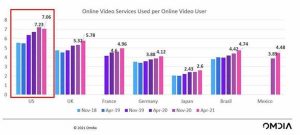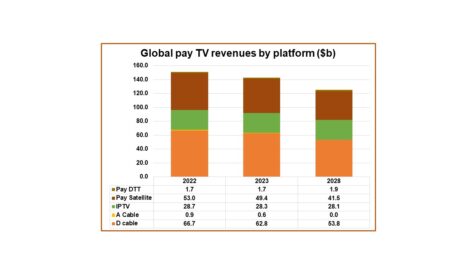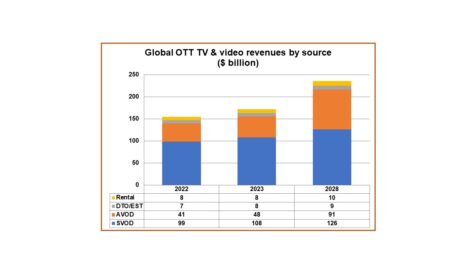
After more than 40 years of operation, DTVE is closing its doors and our website will no longer be updated daily. Thank you for all of your support.
AVOD consumption down 10% in less than six months in US
The number of users of US AVOD services has dropped by 10% in less than six months, according to research powerhouse Omdia.
According to the latest consumer survey from Omdia, US AVOD penetration declined from 93% in November 2020 to 83% in April of this year.
The results were revealed by Omdia’s senior research director, Maria Rua Aguete, speaking at the Connected TV Summit 2021 today.
She commented: “After the 2020 explosion of VOD growth, we’re seeing a cooling of the market, partially driven by viewing habits normalising, and industry consolidation, but also from a wealth of new SVOD and studio services”
Omdia said that consumers are increasingly content via paid alternatives, but suggests that the launch of studio AVOD services will draw viewers away from BVOD offerings, reducing the overall number of services that consumers must manage, while maintaining access to the same volume of content.
The survey also notes that as the number of US AVOD users has declined, the average number of US video services (SVOD and AVOD) taken per VOD user has also fallen for the first time, from 7.23 in November 2020 to 7.06 in April 2021.
Outside of the US, the other countries surveyed showed the number of online services per home continuing to rise, with the UK reaching 5.78 services per user.
“We are starting to see the anticipated streaming services fatigue in the US, but critically it’s not an SVOD fatigue,” said Omdia, which explained it has long anticipated that consumers will become “more sophisticated about their self-bundle” while the composition of monthly streaming services bundle will be more “seasonal”, with consumers tracking particular content they want to watch and dipping in and out of services based on that.
“Dipping in and out of AVOD services is even easier than dipping in and out of SVOD and we are starting to see this behaviour.”
Click here to read the full report.




